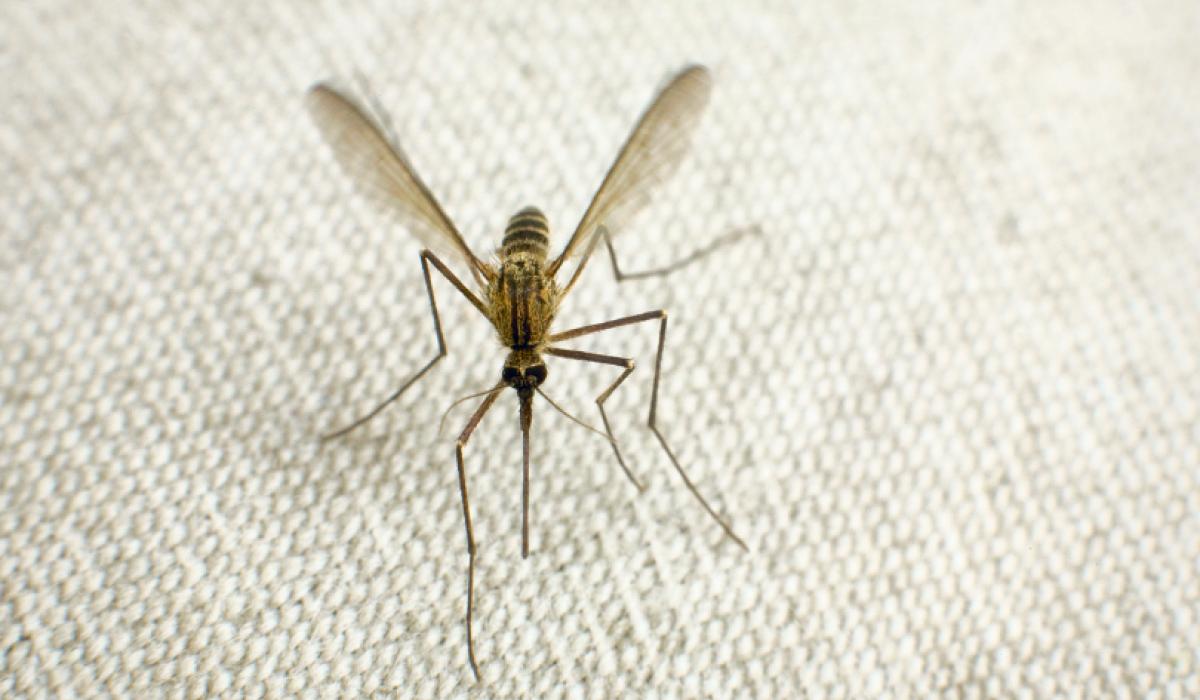
The malaria parasite requires specific human and mosquito tissues to complete its life cycle. Once inside a human, the parasite develops and multiplies, causing periodic bouts of flu-like symptoms, including fever, headache, and chills. The developing parasites destroy red blood cells, which may cause death by severe anemia as well as by the clogging of capillaries that supply the brain or other vital organs with blood. The deadliest of the four species of the parasite is Plasmodium falciparum, a species most likely to be transmitted by the mosquito Anopheles gambiae.
The genomes of humans, A. gambiae, and P. falciparum have recently been sequenced, and hopefully this information will point the way to new avenues of vaccination, treatment, or eradication of this disease. Click on the adjacent thumbnail for more information about the life cycle of Plasmodium falciparum within a mosquito and a human.
| → | A female Anopheles mosquito carrying malaria-causing parasites feeds on a human and injects the parasites in the form of sporozoites into the bloodstream. The sporozoites travel to the liver and invade liver cells |
| → | Over 5-16 days*, the sporozoites grow, divide, and produce tens of thousands of haploid forms, called merozoites, per liver cell. Some malaria parasite species remain dormant for extended periods in the liver, causing relapses weeks or months later |
| → | The merozoites exit the liver cells and re-enter the bloodstream, beginning a cycle of invasion of red blood cells, asexual replication, and release of newly formed merozoites from the red blood cells repeatedly over 1-3 days*. This multiplication can result in thousands of parasite-infected cells in the host bloodstream, leading to illness and complications of malaria that can last for months if not treated |
| → | Some of the merozoite-infected blood cells leave the cycle of asexual multiplication. Instead of replicating, the merozoites in these cells develop into sexual forms of the parasite, called male and female gametocytes, that circulate in the bloodstream |
| → | When a mosquito bites an infected human, it ingests the gametocytes. In the mosquito gut, the infected human blood cells burst, releasing the gametocytes, which develop further into mature sex cells called gametes. Male and female gametes fuse to form diploid zygotes, which develop into actively moving ookinetes that burrow into the mosquito midgut wall and form oocysts |
| → | Growth and division of each oocyst produces thousands of active haploid forms called sporozoites. After 8-15 days*, the oocyst bursts, releasing sporozoites into the body cavity of the mosquito, from which they travel to and invade the mosquito salivary glands. The cycle of human infection re-starts when the mosquito takes a blood meal, injecting the sporozoites from its salivary glands into the human bloodstream |
